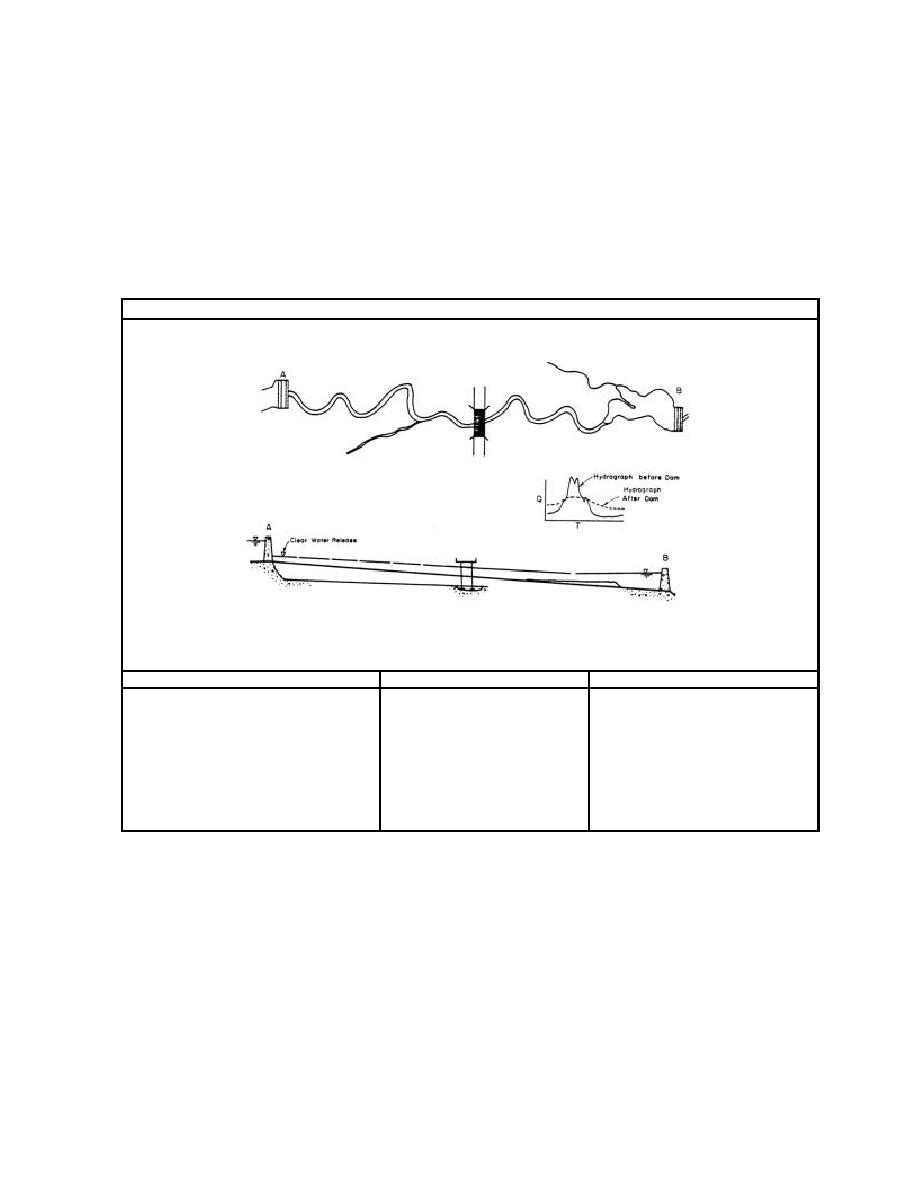
Case (9) through Case (13) illustrate a more complicated set of circumstances. These
cases involve the interrelationship of Cases (1) through (8). In Case (9) the river crossing is
affected by Dam A constructed upstream as well as Dam B constructed downstream. As
documented in Case 8, Dam A causes significant degradation in the main channel. Dam B
causes aggradation in the main channel (Case 7). The final condition at the bridge site is
estimated by summing the effects of both dams on the main channel and the tributary flows.
Normally, this analysis requires water and sediment routing techniques studying both long-
and short-term effects of the construction of these dams, and it is necessary to consider the
extreme possibilities to develop a safe design.
Table 9.1. River Response to Highway Encroachments and to River Development (continued).
Bridge Location
(9) Combined increase of base level and reduction of sediment load upstream
Local Effects
Upstream Effects
Downstream Effects
1 - Dam A causes degradation
1 - Channel could aggrade or
1 - See upstream effects
2 - Dam B causes aggradation
degrade with effects similar
3 - Final condition at bridge site is the
to cases (7) and (8)
combined effect of (1) and (2).
Situation is complex and combined
interaction of dams, main channel
and tributaries must be analyzed
using water and sediment routing
techniques and geomorphic factors
In Case (10) Bridges A and B cross two major tributaries a considerable distance upstream
of their confluence. Upstream of Bridge A, a diversion structure is built to divert essentially
clear water by canal to the adjacent tributary on which Bridge B has been constructed.
Upstream of Bridge B the clear water diverted from the other channel enters the storage
reservoir and the water from the tributary plus the transfer water is released through a
hydro-power plant. It is anticipated that a larger storage reservoir may be constructed
downstream of the confluence on the main stem at C. These changes in normal river flows
give rise to several possible complex responses at bridge sites A and B, in the tributary
systems as well as on the main stem. Bridge Site A may aggrade due to the excess of
sediment left in that tributary when clear water is diverted. However, initially there may be
9.13




 Previous Page
Previous Page
